Immersive Experiences, Workforce Development, Sustainability in AV, Conferencing & Collaboration, Broadcast AV, and 4 more
Human Ear behavior and Atmospheric Pressure effects
Ears under pressure ≠ normal hearing /
Brain under stress ≠ efficient listening /
AV under design ≠ just sound, but human adaptation
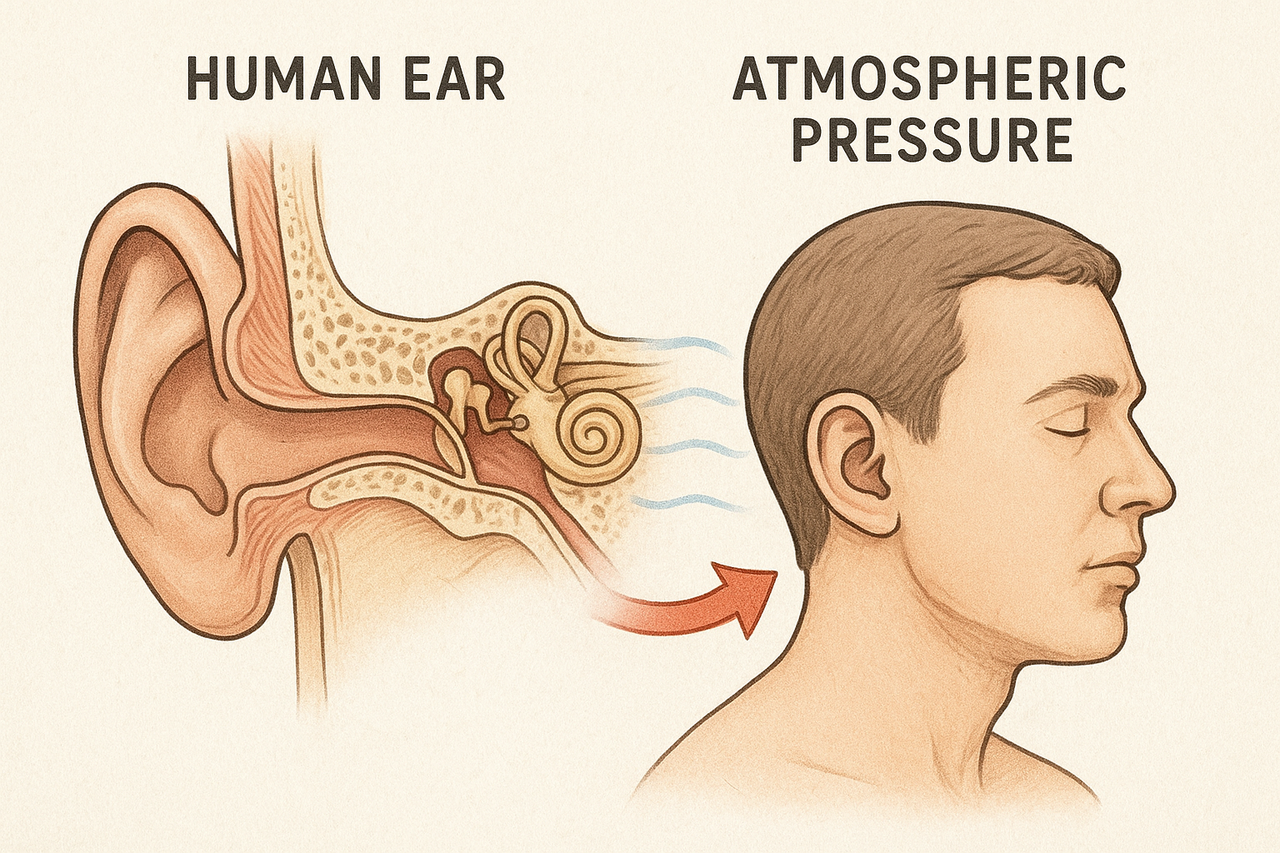
Integrating human physiology with acoustics and AV technology is essential for creating optimal and user-friendly environments.
The way our bodies perceive and react to sound and visual stimuli directly impacts comfort, productivity, and communication effectiveness.
By understanding physiological responses to different acoustic conditions and AV setups, we can design spaces that promote well-being and enhance the user experience.
Let's understand 1st Ear Behaviour.

1. Human Ear Behavior in Different Atmospheric Pressure
The ear is sensitive to pressure changes because of its anatomy:
-
Outer Ear: Collects sound waves. Not directly affected by pressure except in extreme wind conditions.
-
Middle Ear: Air-filled cavity with the Eustachian tube that equalizes pressure with the outside environment.
-
Inner Ear (cochlea): Filled with fluid, less compressible, so changes in middle ear pressure can distort how vibrations reach the cochlea.
Effects of Low or High Atmospheric Pressure
-
Low pressure (e.g., high altitude, aircraft cabin):
-
Eardrum may bulge outward (negative middle ear pressure).
-
Leads to muffled hearing, discomfort, sometimes dizziness (barotrauma if severe).
-
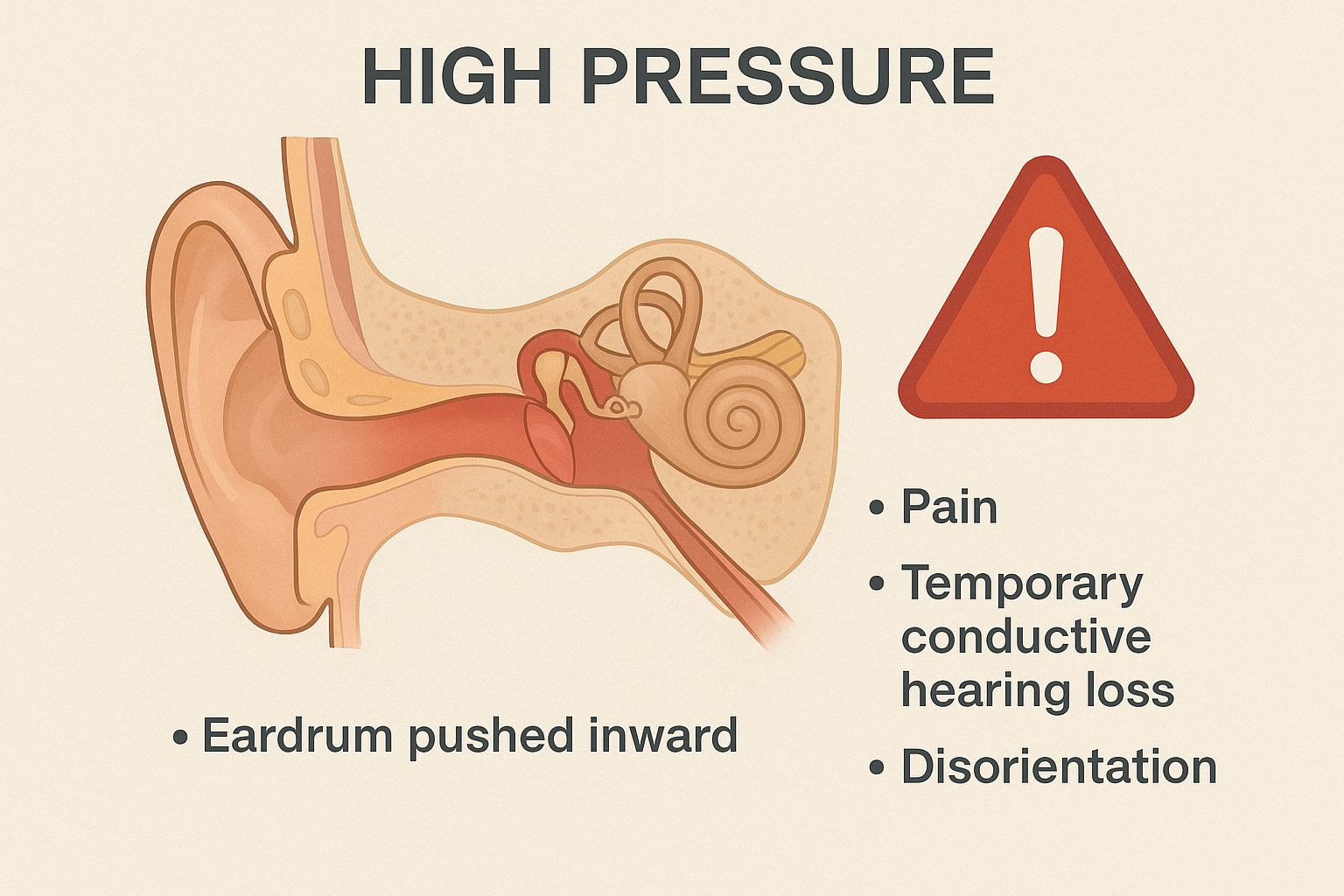
-
High pressure (e.g., diving, hyperbaric chamber):
-
Eardrum pushed inward.
-
Risk of pain, temporary conductive hearing loss, disorientation.
-
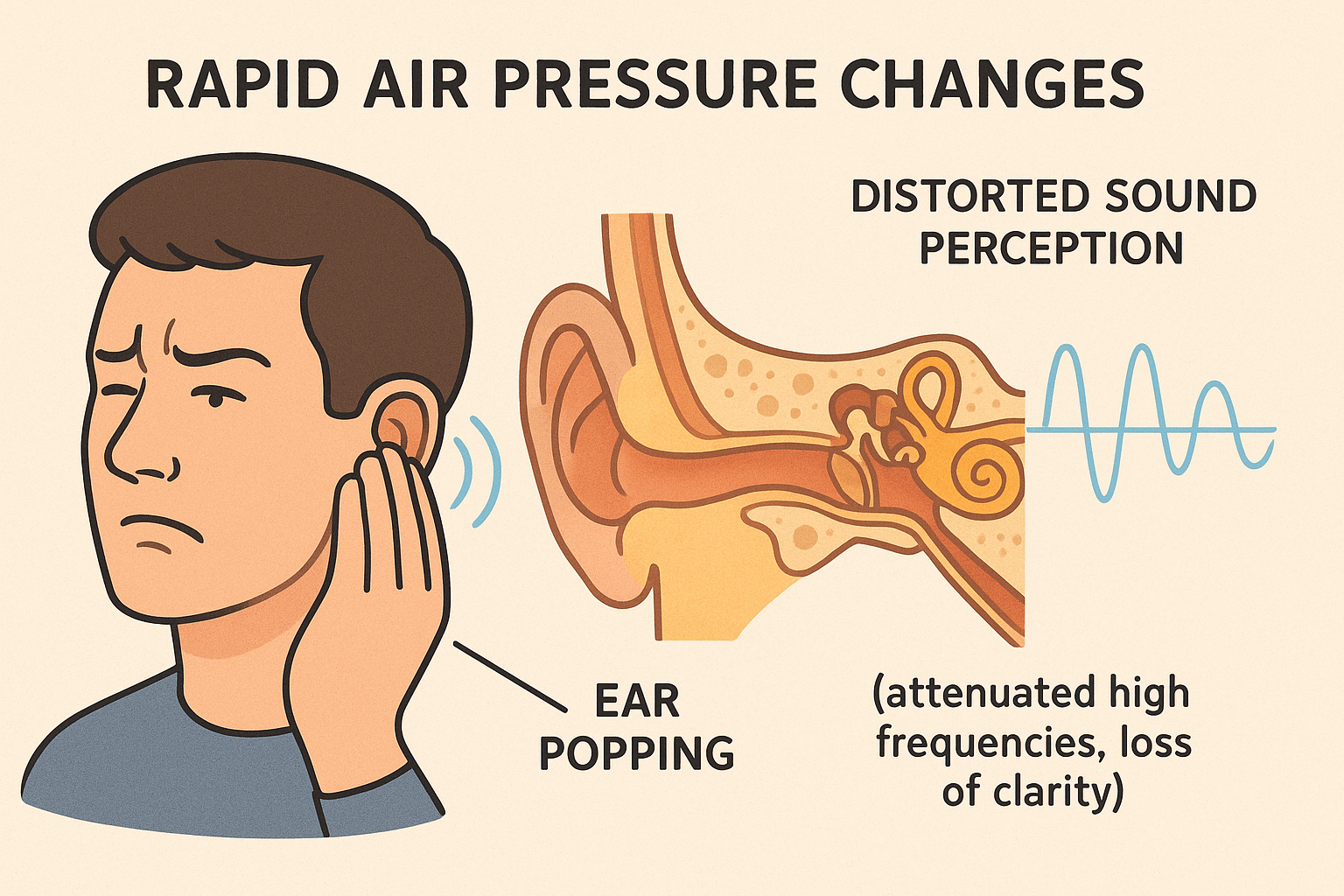
-
Rapid pressure changes (e.g., weather, tunnels, elevators):
-
Causes "ear popping" as Eustachian tube tries to equalize.
-
If not equalized, sound perception is distorted (attenuated high frequencies, loss of clarity).
-
2. Effect on the Brain and Listening
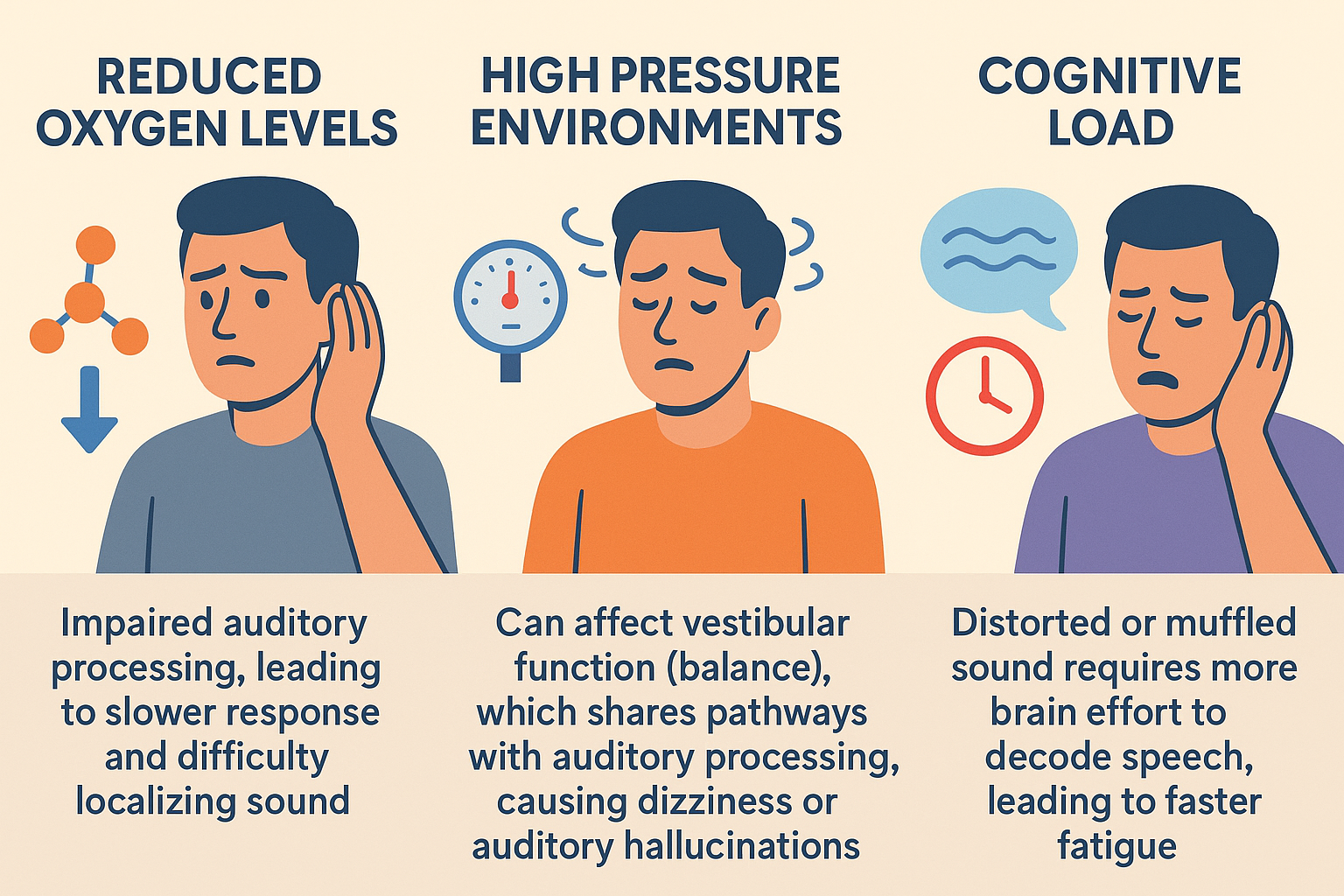
3. How AV Can Help Mitigate These Issues
AV technology can adapt environments to maintain intelligibility and comfort:
(A) Acoustic Compensation
-
DSP equalization: Boost speech frequencies (2–4 kHz) if muffling occurs due to pressure effects.
-
Dynamic loudness compensation: Maintains perceived clarity at lower SPL when hearing is less sensitive.
(B) Assistive Listening
-
In-ear monitoring systems (wireless IFB/assistive devices) with sealed or vented designs can help bypass pressure issues by delivering sound directly and consistently.
-
Bone conduction headphones can bypass middle ear dysfunction caused by pressure differences.
(C) Environmental Control
-
Active Noise Cancellation (ANC): Reduces background noise in pressurized spaces (aircraft, submarines, tunnels), lowering listening strain.
-
Sound masking: Prevents distraction in environments where pressure affects cognitive load.
(D) Visual & Multimodal Cues
-
Subtitles / live transcription: Reduces reliance on distorted hearing in compromised environments.
-
Haptics or visual alerting systems: Support safety-critical communication where hearing is impaired by pressure.
(E) Medical & Preventive AV
-
Training simulators (VR/AR with realistic sound under different pressure conditions) help pilots, divers, and astronauts prepare for auditory changes.
(F) Common engineering details & best practices people can use (applies to all)
-
STI / Articulation Index: measure and tune for intelligibility. Use both objective (STI, RASTI) and subjective tests.
-
SNR target: > +10 dB for clear speech in noisy environments; aim higher for safety-critical comms.
-
Latency: keep internal comms <20–30 ms; any >50 ms degrades interactive talk.
-
For AV/IFE sync, <40 ms perceived is preferable.
-
Redundancy: dual power, redundant network paths, hardware fallback for paging and emergency alerts.
-
Acoustic treatment: reduce reverberation times in indoor zones (RT60 0.4–0.8 s depending on space) — improves intelligibility more than increasing SPL.
-
User training: provide quick training on equalization/preset selection for non-technical operators; provide simple “altitude/pressure” presets.
-
Multimodal: always add visual & haptic redundancies for critical alerts — don’t rely only on audio, especially where barotrauma/vestibular issues can reduce hearing/processing.
-
Documentation & logs: automatic comm logging, event timestamps, and health telemetry for DSP/network.
Conclusion:
We can say that atmospheric pressure changes can cause muffled hearing, discomfort, and increased brain fatigue due to distorted sound perception.
AV systems help by compensating acoustically (DSP, ANC, EQ), Supporting with assistive listening (bone conduction, IEMs) and reducing cognitive strain with multimodal communication (visual aids, subtitles, VR training).
We learn that atmospheric pressure directly impacts ear function, listening, and brain processing, but with the right personal habits and AV technology, these effects can be managed to maintain comfort, clarity, and safety.
Shows that human-centered design is at the core of AV. Moves the discussion beyond “just hardware” into health, comfort, and safety. Creates a bridge for interdisciplinary collaboration (AV engineers working with medical, acoustic, and cognitive science experts).
-
Xchange Advocates are recognized AV/IT industry thought leaders and influencers. We invite you to connect with them and follow their activity across the community as they offer valuable insights and expertise while advocating for and building awareness of the AV industry.
Recommended Content
Immersive Experiences, Sustainability in AV, AI in AV, Broadcast AV, Command and Control, Digital Signage, Live Events / Performance Entertainment, Business of AV, A Culture of Inclusion, Celebration of AV Excellence, InfoComm, Sustainable AV , AV/IT Buyers, AV Education for The Next Generation, Xchange Advocate Room
AV for Sports Industry in India with Cricket Prospective


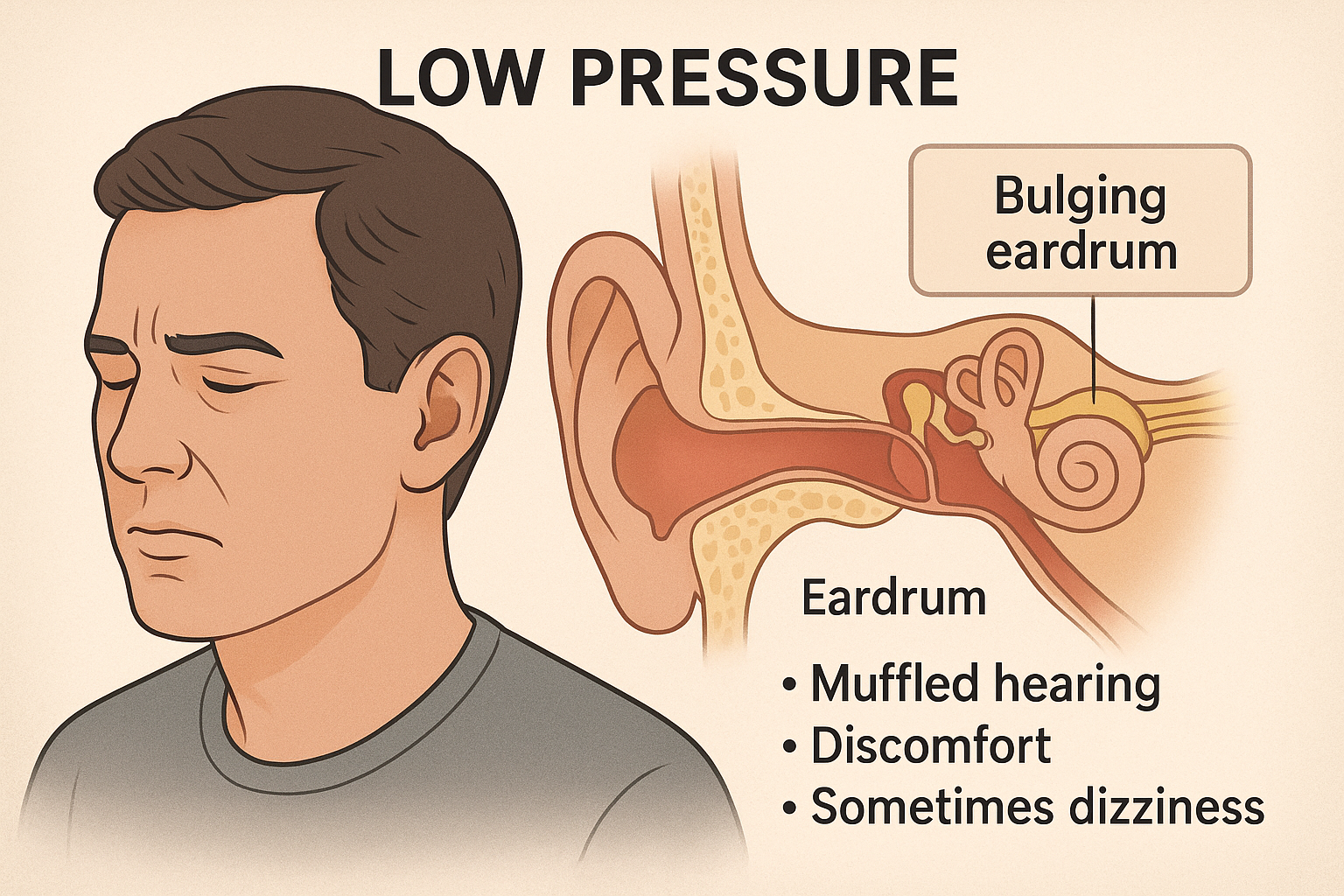



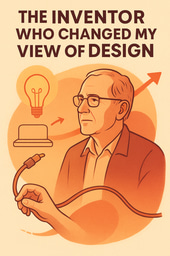
Please sign in or register for FREE
If you are a registered user on AVIXA Xchange, please sign in